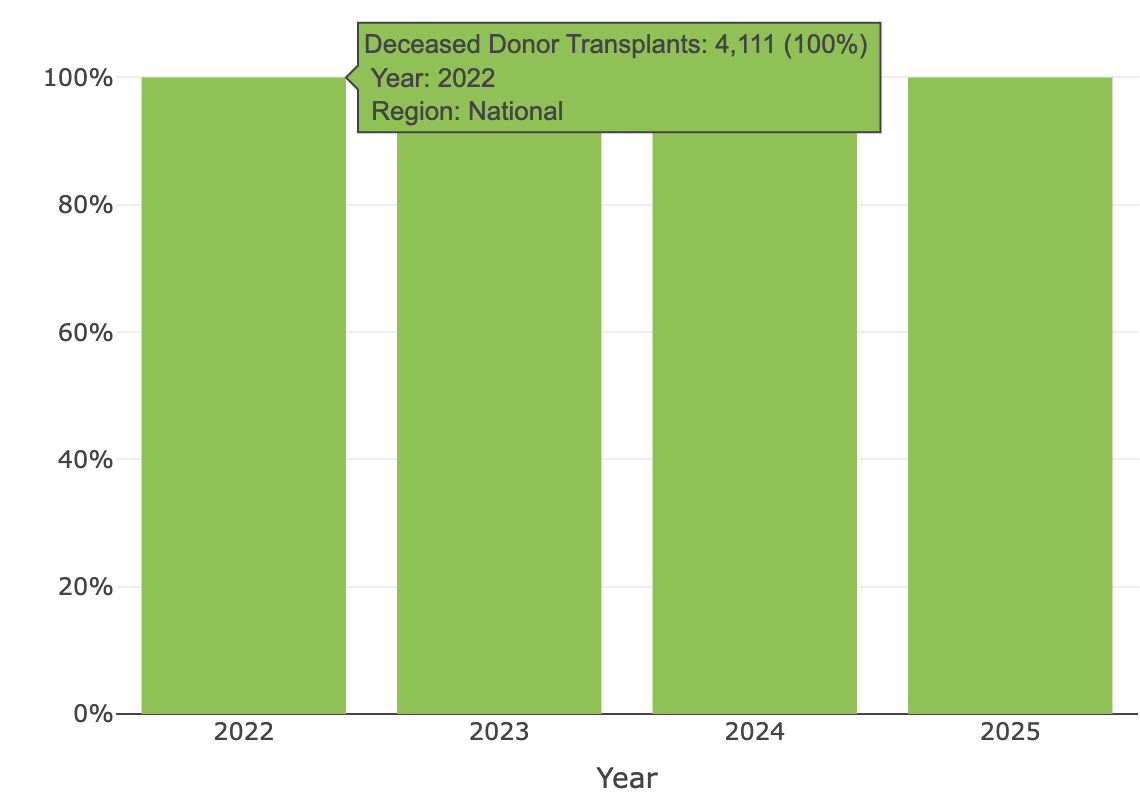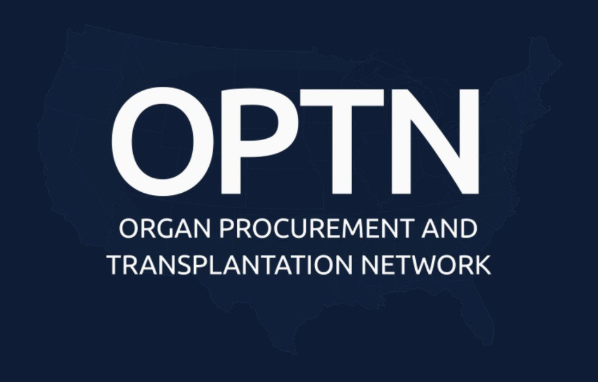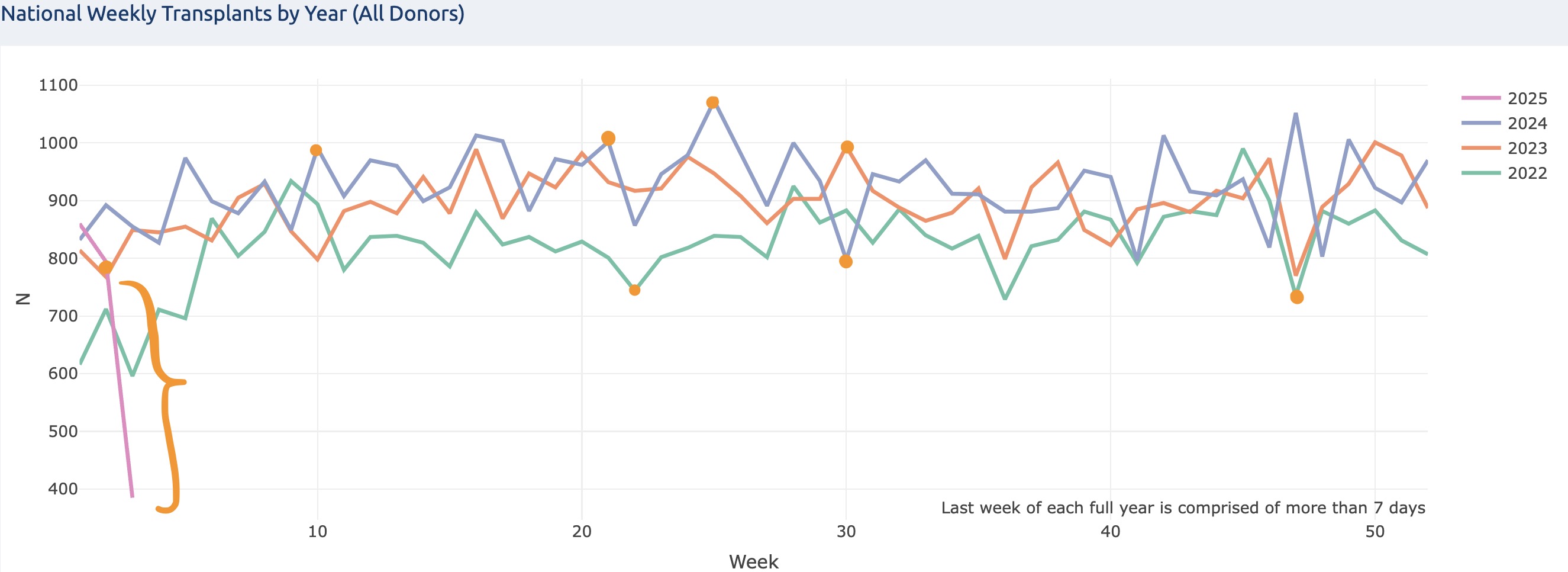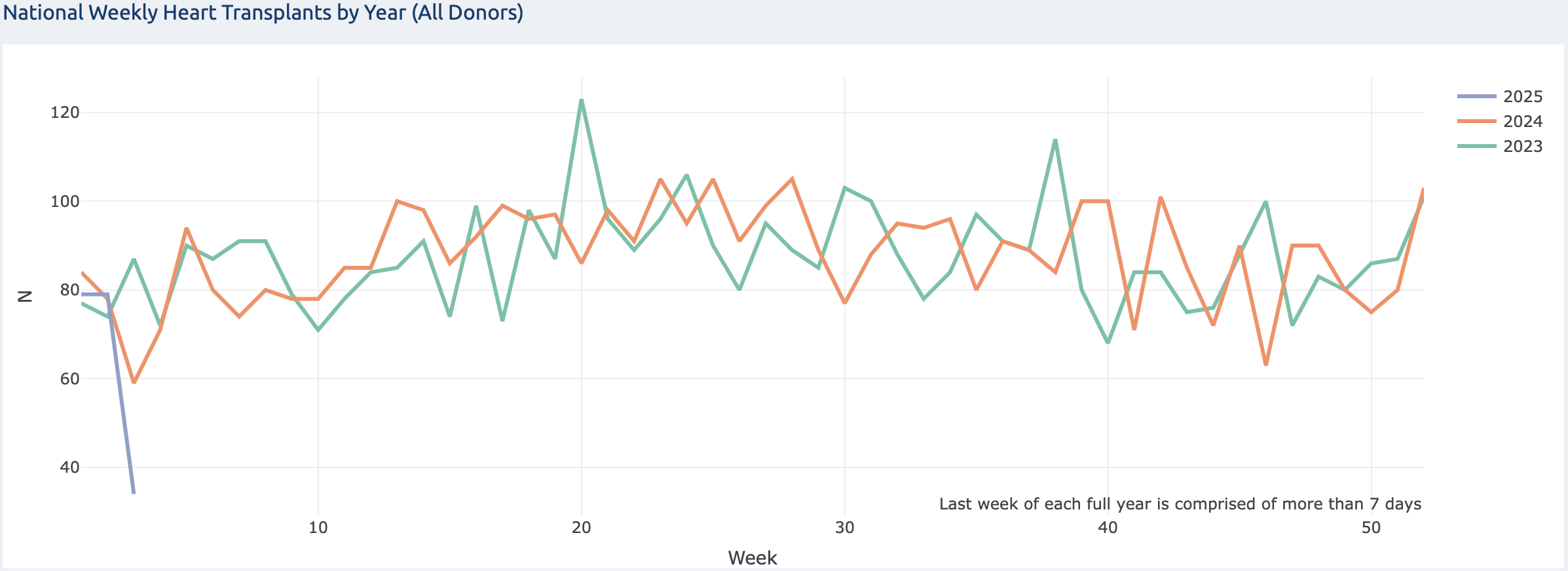Heart Transplants
Understanding Heart Transplants in the US: Insights and Data for Researchers and Patients
Gain an Understanding: How does heart transplant surgery work?
National Weekly Heart Transplants by Year (All Donors)
This graph illustrates the trends in national weekly heart transplants over the years 2023, 2024, and 2025. The data shows variability in transplant activity week by week, with notable peaks and troughs reflecting fluctuations in donor availability, medical advancements, or operational factors such as holidays or healthcare system pressures. While 2024 shows a more consistent trend, 2023 displays a slightly greater degree of fluctuation. The data for 2025, though limited, appears to follow a comparable trajectory to previous years. Insights from this graph can help medical professionals and policymakers better plan for resource allocation, optimize transplant logistics, and identify potential challenges in the healthcare system.
Building on the observed trends, 2025 has started with lower weekly transplant numbers, recording only 34 transplants by Week 3. However, this early decline does not necessarily indicate a deviation from the broader pattern seen in previous years. Historical data from 2022 to 2024 demonstrates that transplant activity often stabilizes and increases as the year progresses, likely influenced by improved donor availability and healthcare system adjustments. If 2025 follows a similar trajectory, it is plausible that weekly transplant numbers will align with or exceed previous years in later weeks. This reinforces the importance of ongoing monitoring and adaptability within transplant systems to address early-year fluctuations and ensure consistent patient care.
National Heart Transplants by Donor Type and Year


OPTN Metrics Heart Transplant Details
The graph highlights that 100% of heart transplants in the years 2022, 2023, 2024, and 2025 have been sourced from deceased donors, reflecting the continued reliance on this donor pool for life-saving procedures. The consistency in this metric underscores the critical importance of deceased donor organ donation programs and the success of public awareness campaigns promoting organ donation. However, it also points to a potential limitation in diversifying the donor pool, as living donors have not contributed to heart transplants, likely due to the technical and ethical challenges associated with such procedures.
This data provides valuable insight for researchers and policymakers into the sustainability of the current organ donation model. While deceased donors remain essential, the graph suggests a need to explore innovations such as artificial hearts, xenotransplantation, or advanced regenerative medicine technologies to meet increasing demand.
National 1-Year Heart Patient Survival
This graph highlights the stability and success of heart transplant outcomes in the United States, with a 1-year patient survival rate of 91.56% for transplants conducted in 2023. This consistent performance over the years, as depicted by the relatively flat trendline, reflects advancements in surgical techniques, post-operative care, and immunosuppressive therapies. The narrow 95% confidence interval (90.70% - 92.35%) further emphasizes the reliability of this metric. These high survival rates underscore the effectiveness of the transplant system and offer reassurance to patients and their families about the life-saving potential of heart transplantation.
Insight Extraction: A Practical Guide with Examples
Sample Analysis: Drawing Insights from Heart Transplant Data
For Researchers: Identifying Patterns and Innovating Solutions
- Begin by identifying the peaks and troughs in the weekly transplant data. Look for anomalies, such as unusually high or low transplant numbers, and investigate their causes (e.g., holiday seasons, healthcare system adjustments, or donor availability fluctuations).
- Examine how transplant numbers in 2025 compare to prior years. Note the differences and similarities in the fluctuations and establish whether 2025 is following a similar trajectory to past years or diverging significantly.
- Researchers and healthcare professionals can work together to incorporate this data into predictive models, improving the efficiency of donor organ distribution and transplant logistics.


For Patients: Understanding Availability and Outcomes
- The data helps them understand the seasonal availability of heart transplants and the high 1-year survival rate (91.56% in 2023), offering clarity on waiting times and reassurance about successful outcomes.

